Movie Review – Lodger, The: A Story Of The London Fog
Principal Cast : June Tripp, Ivor Novello, Marie Ault, Arthur Chesney, Malcolm Keen, Eve Gray, Regina Gardiner (Uncredited), Alma Reville (Uncredited).
Synopsis: A woman falls for a man who might just be a London-based serial killer, residing in the room upstairs.
*******
Silent but deadly.
The Lodger was the first of three feature films Hitchcock released in the UK in 1927 (it wouldn’t see US shores until the following year), and his second for Gainsorough Pictures. Partially based on the novel The Lodger by Maria Belloc Lowndes, the film depicts the fear and paranoia surrounding a serial killer working his way through the streets of London – very much reminiscent of the (then) recent Jack The Ripper murders, which occurred barely forty years before this film was released. The story is one of the archetypes of the “mystery thriller” film, a man who, for all intents and purposes, appears to be guilty of some heinous crime, yet nobody (not even the audience) is entirely sure of it. The film also contains a number of touchstones in theme and style that Hitch would reuse down the years (most noticeably in Psycho – is there any other director in history who could make a staircase seem menacing?), and while I hesitate to say his “fingerprints” seem fairly well honed by the time he worked on this film, there’s a surety and confidence on display behind the camera here that belies the then-28-year-old director’s relative inexperience. What it does display is just how good the man was so early.
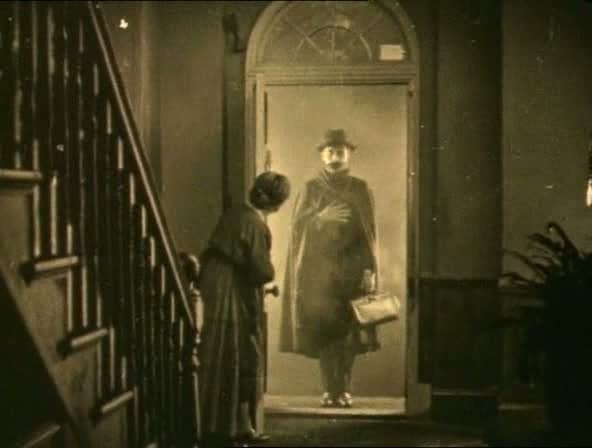
Daisy Bunting (June Tripp), a fashion model who still lives with her parents (Maria Ault and Arthur Chesney) in inner-city London, and who is romantically linked to policeman Joe (Malcolm Keen), becomes entangled with a mysterious stranger (Ivor Novello) who takes up lodging in the spare room on their home’s top floor. The stranger bears a striking resemblance to the description of a serial killer known as “The Avenger”, who is known for targeting young blonde women (of whom Daisy is a prime example), yet Daisy is attracted to him regardless. Her parents are suspicious, Joe is furious about Daisy’s attraction to the stranger, and as the lodger becomes more and more mysterious, and the Avenger keeps taking victims, it becomes apparent that the young girl might just be in very serious danger.
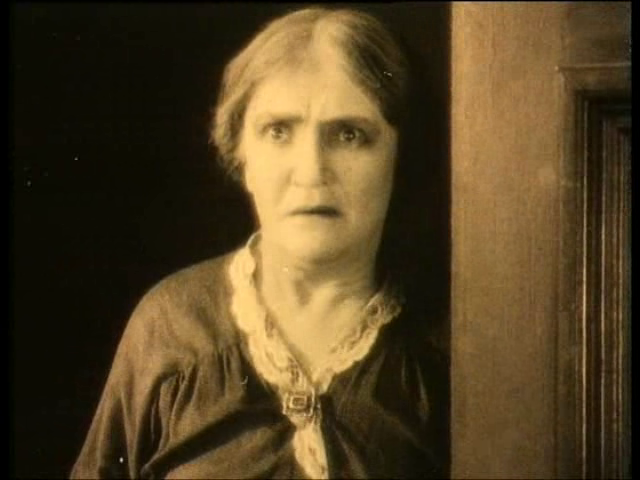
As a work of imaginative fiction tapping into a still bubbling cultural icon like Jack The Ripper, The Lodger takes some beating. Filled with powerful imagery (even now) that shocks, delights and always looks amazing, Hitchcock’s second major release is an absolute belter. Filled with his trademark style, from low camera angles and era-specific lighting and detail, The Lodger: A Story Of The London Fog is a fascinating example of the power of silent cinema. I’ve long admitted that appreciating the work of silent film is something lost on me, but the more I see of it (and especially now watching this film!) the more I have been coming to appreciate the skill with which these directors evoked emotion from an audience couldn’t hear a word being said. For 1927, I expected a film of fairly limited quality and artistic power, but I’m here to testify that I’ve been proven wrong once again. The Lodger is terrific.
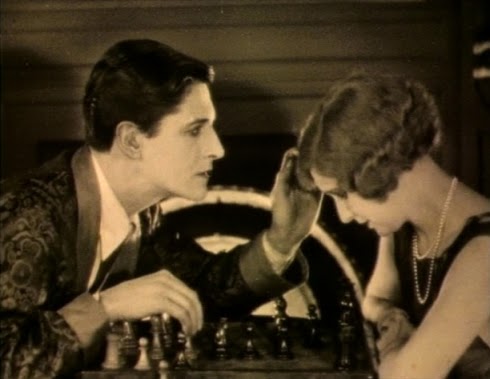
The film opens with the body of a woman being found on what I presume is the banks of the Thames, in London’s fog-bound inner city area. The ubiquitous note from the killer, a serial murderer known as The Avenger, is simple and eerie – his symbol is a triangle – sets up the basic premise with ease and fluidity. With a few short scenes, Hitchcock establishes the motivation for the film’s unease and paranoia, as well as the symbol of hope in Daisy, that we, the audience, will follow through this story. Hitch is the master of saying a lot with relatively little, and his sublime establishing work in the opening ten or so minutes quality brings the audience into the world of the lodger’s story – and what a story it is. The unseen, hidden, could-be-anyone serial killer was, and still is, a shadow looming large over society – hell, the television industry has ridden on the back of serial killers for generations now – and Hitch makes the most of the gloomy, desaturated London atmosphere to evoke even further tension from the scenario.
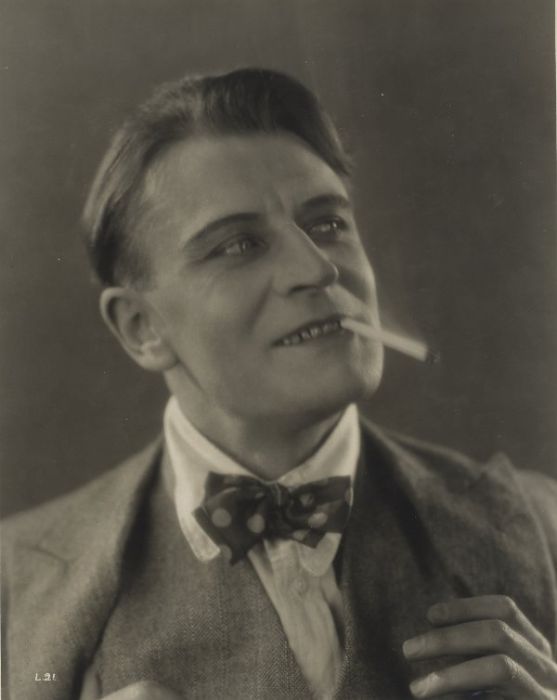
The films story is less reliant on the actors than it is on Hitch’s methodical style. And let me say this: The Lodger looks amazing. After a full restoration, the film’s stunning cinematography (most often in sepia monochrome, although the occasional flick to a blue, or black mono color palette arrives here and there) looks brilliant, and it truly highlights Hitch’s amazing camerawork. While the camera technology of the day didn’t leave a lot of room for fancy panning and dolly work, Hitch’s framing and angular camera placement more than accentuates the tension and thrills this thrifty, punchy narrative generates. Hitch’s use of low angles, especially around the interior of the Bunting’s home, and in particular their circular staircase, forms the basis for shorthand storytelling for genre films of the future – it originated here, folks, and even though the style Hitch employs is in its formative period, the foundation is well and truly solidified even at this early point.
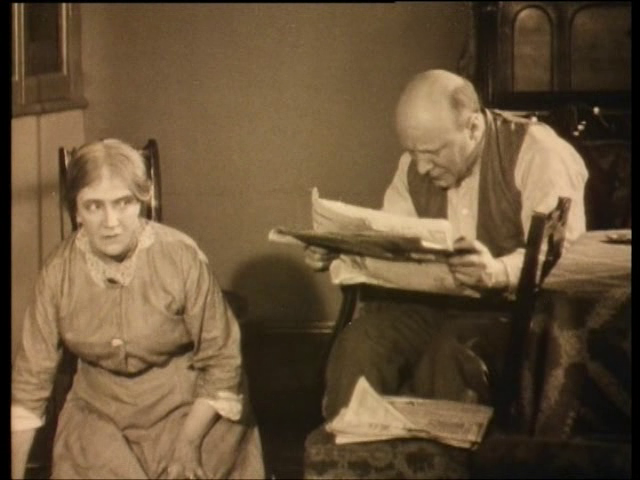
The use of framing in this film is superb. Hitch’s placement of the camera is exquisite from a film-making perspective, his use of close-ups and wide shots, especially given the relative lack of deep focus most cameras had at the time, as well as his judicious management of location and studio work, is amazing to see even now; gradual reveals of emotion, such as Joe’s tilt of the head upwards from beneath his hat as he realizes the lodger might be the Avenger, has been parodied and imitated ever since, and I’m not even sure Hitch can lay claim to originating it! Hitch’s use of the sparse set design draws focus onto the characters, and his free-range shorthand with style and casual juxtaposition of imagery – as Joe slowly pieces together the “clues” to the Avenger’s identity, several images are superimposed over a shot of a footprint of a fleeing lodger, something rather surprising on a film of this vintage! – is compelling. Frankly, watching a film like this is more interesting for its technical prowess than the story itself, although considering how cool this story is portrayed by the production, only adds value to the movie.
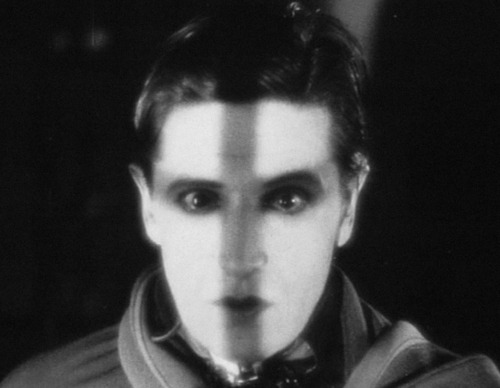
The cast all do a good job. Because I normally judge people on their acting performances, and the majority of films I watch have dialogue, my knowledge and appreciation of silent film falls well short of where it should be; in saying that, I can only say that the performances the cast do give provide plenty of momentum and ease of understanding of the story, even with the helpful interstitials thrown in. Lead actress June Tripp (here credited simply as “June”) is beautiful as the “young blonde”, and one can see Hitch’s predilection for this type of leading lady started early. Tripp is typically feminine here, with her sighs and graces a product of the time moreso than any overly flamboyant theatricality creeping in. Ivor Novello, who was apparently a big star back in the early part of the 20th Century as a composer and actor, looks positively vampiric here as the titular Lodger, his slick-back hair and rather smooth features, as well as a great entrance framed against the night with a scarf hiding most of his face, giving him the angular sinister look needed to pull off the role. Rather infamously, Hitchcock had to modify the film’s ending somewhat when Novello’s management stipulated that there could be no ambiguity that the star wasn’t the killer, something he baulked at but relented to anyway – the film never shows us the killer, rather ending with an “Avenger captured by police” newspaper headline rounding out the supposed “is he or isn’t he” tension the film enjoyed up that point.
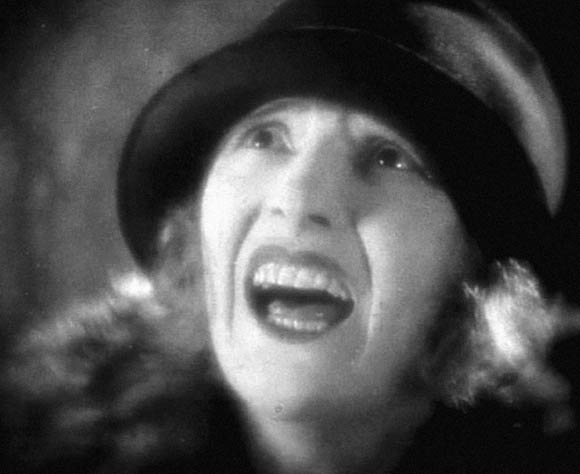
But the star of the film isn’t any of the cast (although that might have been disputed back in the day), rather it’s Hitch’s direction. Honestly, I don’t think I’ve enjoyed watching a silent film more, and that’s saying something. To maintain my interest, Hitchcock needed to really pull out all the stops (which he did), and deliver a film with tension, complexity of technical skill, and a sense of virtuosity only Hitch could bring. The Lodger: A Story Of The London Fog is a sparkling diamond of a silent film; it’s dazzling in tone and theme, delivers some nice story beats in its relatively brief running time, and showcases early Hitchcock at his absolute best. For any fan of cinema, this is a must watch!!

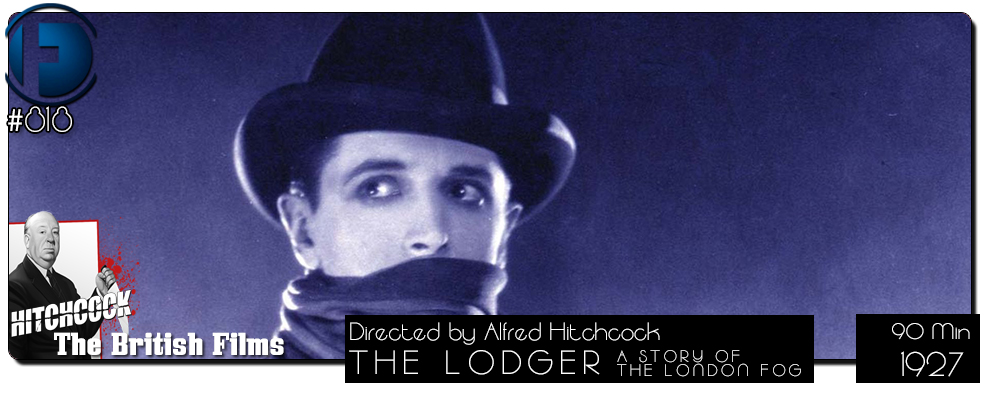
You can see from your description of the film's story and style as well as the images how the film was a precursor to the sensibilities that would make Hitchcock so great. The story itself is reminiscent of films he would go on to make – it's clear he knew what he wanted to do even as a young filmmaker. In one sense, given his great visual style, he was a perfect fit for silent movies. Its incredible that he was able to take that ability and make it work when sound became inevitable. It's a shame Chaplin couldn't do the same.
My recent post Action Galore but “The Mortal Instruments” is a Dull, Uninteresting Bore
What you\’ll notice in weeks and months to come, Dan, is how The Lodger is something of an abberation in Hitchcock\’s early work. Tomorrow\’s review of The Pleasure Garden, for example, has a note that many of his other silent films (at least, those I\’ve seen) didn\’t seem to have the…. how shall I say this… enthusiasm? Visual style?…. that The Lodger seemed to have in spades. Almost like an M Night Shyamalan – comes out swining early, then can\’t seem to back it up in later efforts. Of the films I\’ve viewed thus far, none of his other silent films have come close to the impact The Lodger had on me…. Make of that what you will, but it\’s an interesting facet to Hitch\’s early career – we all know how successful and amazing his later films are, but I suspect many aren\’t aware that a lot (at least to me) of his really early stuff is still him feeling his way into the industry, honing his craft, as it were. It\’s fascinating to watch.